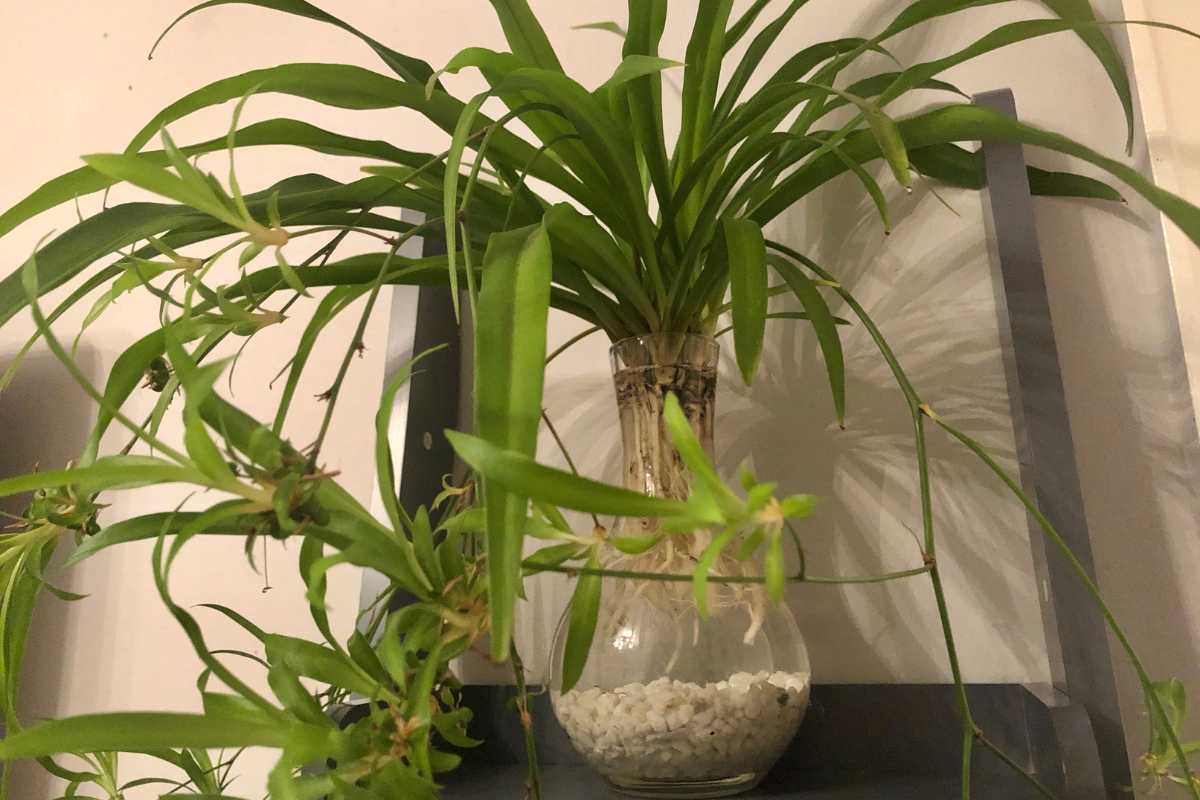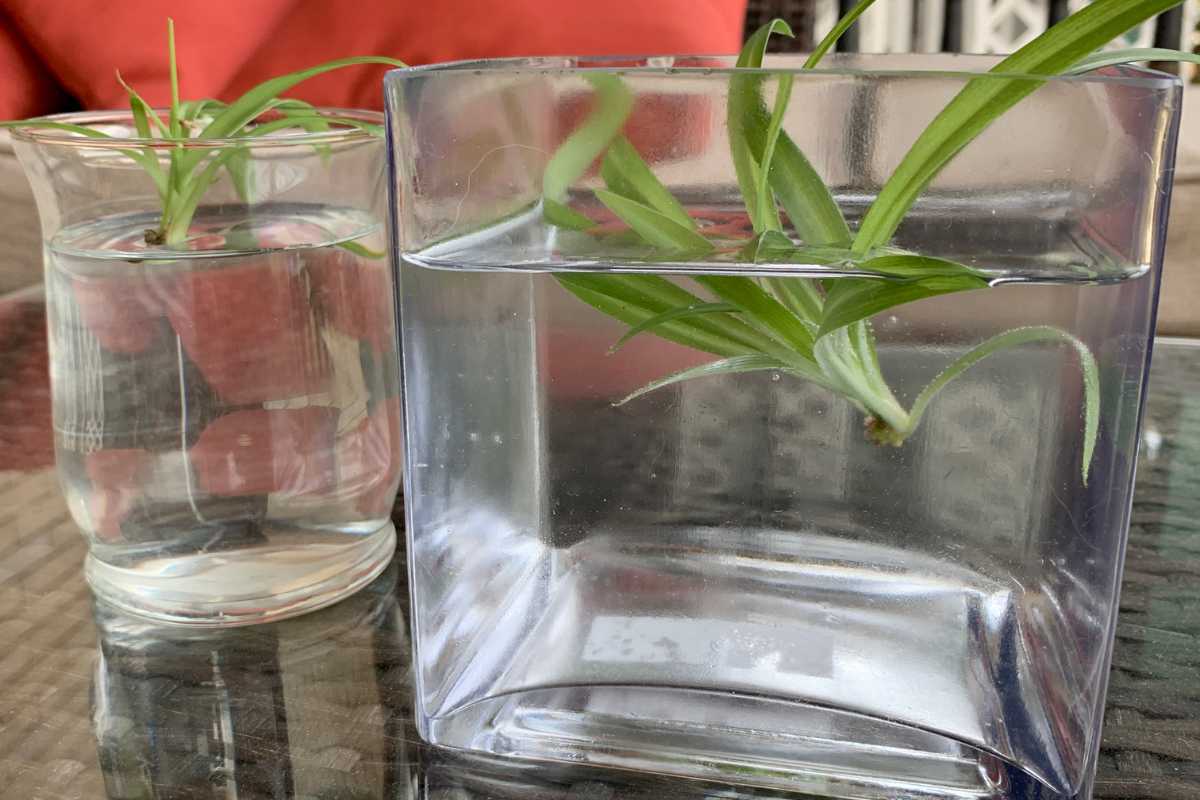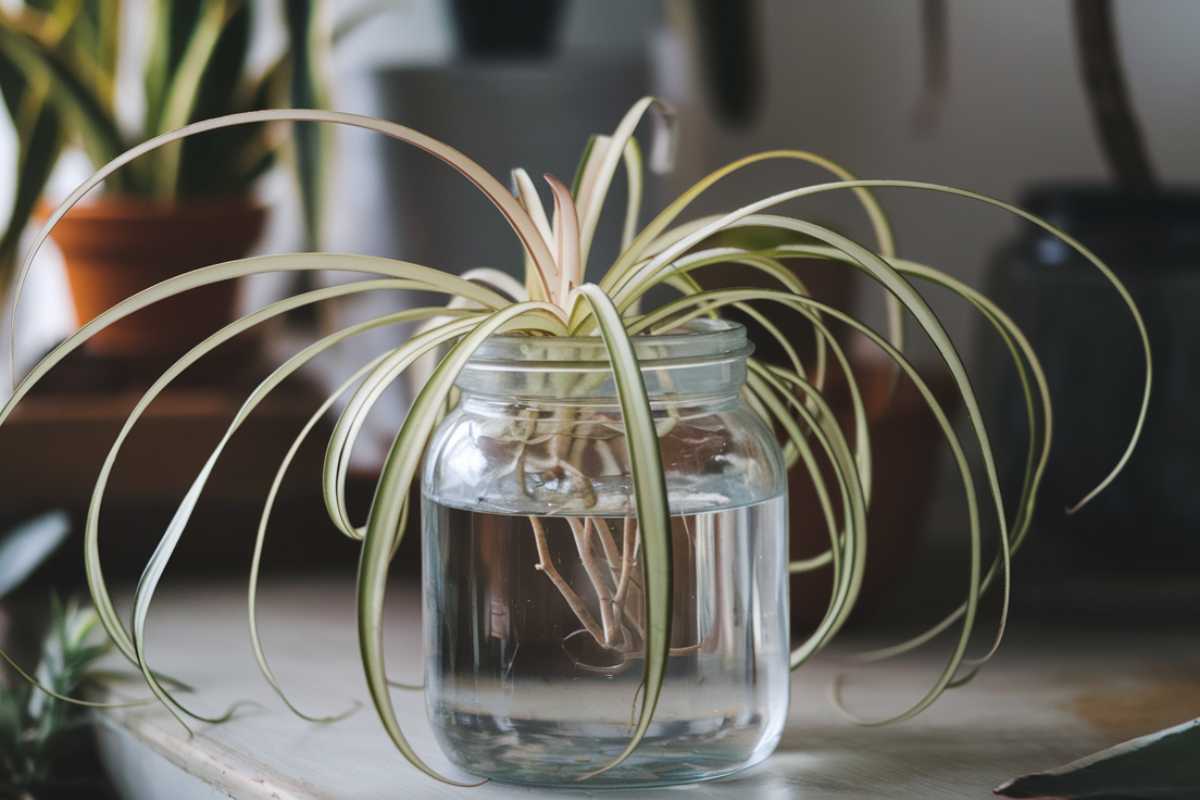Growing Spider Plants, or sometimes referred to as Airplane Plants or Ribbon Plants, in water are very easy, at least while they are young and not yet mature plants.
Placing them in the water is an excellent way to propagate them. Once they are established though, they may need to be transplanted into soil.
It’s also possible to grow Spider Plants in water for long periods, but the plants will probably stay smaller this way.
- Related article: What Are Spider Plants
In this article, we will explain how you can grow Spider Plants in the water and the possible benefits of doing so.
Can You Grow Spider Plants in Water?

Spider Plants can be easily grown in water, at least until they are young. There are some differing opinions on whether they can be successfully grown in water once they are full-grown plants.
The key to growing spider plants in water for longer periods is providing them with the nutrients they need.
Just using regular tap water won’t be enough since it lacks minerals and other substances that these plants would normally absorb from the soil.
A way to do this is to add some fertilizer with the key nutrients to the water. This must be done with caution though, since these plants don’t need much fertilizer.
If too much is applied, they will easily get root burn from the salt build-up.
What is certain is that a great way to propagate Spider Plants is to place the spiderettes in water.
These baby Spider Plants should be cut from the mother plant using a clean and sterile pair of scissors or sharp knife.
They should then be placed in a jar or glass of water so that only the bottom part of the baby plant is submerged.
To ensure optimal growth, the Spider Plant cutting should be kept in an upright position. In about 1 or 2 weeks, the plant will start its first root growth.
This is an extremely efficient and easy way to obtain many adult Spider Plants from a single Spider Plantlet or baby Spider Plants.
How to Grow Spider Plants in Water

Here’s more detail on Spider Plant propagation in water and the appropriate Spider Plant care guide:
1. Start from the Spider Plant babies, or spiderette, by cutting it off from the main plant with clean, sterile scissors or sharp knife.
2. Fill a glass container with waterand place the cutting in the container so that all or most of its leaves are not in the liquid.
You can use demineralized water. Tap water would work too, provided you let it sit for at least a day beforehand to allow most of the chlorine to evaporate.
3. Place the jar with the cutting in bright, indirect sunlight. Spider Plants prefer warm temperatures between 65° to 90°F.
4. Change the water frequently, about once per week should be enough.
Like before, keep using demineralized water or tap water that has been left sitting for a day. Rainwater is also a viable option.
5. You should start feeding it once a month with a liquid fertilizerfor houseplants once the plant has developed roots. Fish aquarium water is a natural fertilizer that can also be used.
To avoid salt buildup, keep changing the water once a week.
If you notice yellow or brown leaf tips, or dead leaves, change the water immediately, rinse the roots, and decrease the amount of fertilizer you use.
6. Keep the leaves from dangling into the water and remove any dead or rotten parts to ensure healthy plant growth.
Benefits of Growing Spider Plants in Water

Here are some of the main benefits of growing Spider Plants in water instead of soil:
1. It doesn’t require as much attention as you won’t need to remember to water them.
2. You’ll create less of a mess than with potted plants in soil.
3. The plants will stay smaller, which is ideal if you don’t have much space or a larger container.
4. If you have an aquarium, growing your Spider Plants there will benefit both your fish and your plants.
5. It is relatively easy and cheap to grow as they propagate from their parent plants, making them the favorite plants as gifts for family and friends.
Final Thoughts on Growing Spider Plants in Water
Spider Plants are a great addition to any home that needs a pop of greenery.
Transform your home into a lush oasis by effortlessly growing Spider Plants in water!
Say goodbye to dirt and hello to stunning growth! With this method, your plant will thrive in a gorgeous vase or jar without any soil worries.
With our foolproof guide to growing a thriving Spider Plant in water, not only will you bask in the benefits of cleaner air, but you’ll also elevate your styling game with this awesome plant for decoration!
So, get ready to dive into the world of hydroponic gardening and enjoy the stunning Spider Plants in water!
Discover more about Spider Plants by checking these articles out:
- How Fast Do Spider Plants Grow
- How to Make My Spider Plant Fuller
- Spider Plant in Water With Fish
- Trimming Spider Plant Leaves
- Plants That Look Like Spider Plants
Sources:


